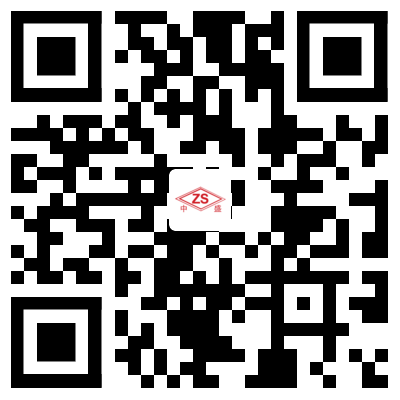How to confirm textile color samples generally
Release time:
2021-10-27
1 Self-evaluation of color samples
Use the gray card to match the color. Level 4.5 is required between the original sample and the sample sample. When using a measuring and matching instrument for color matching, generally △E<1, taking into account the system error, the internal control standard △E<0.6, and striving for a standard sample. For high requirements, hue △H and saturation △C should also be taken into consideration.
To fully understand the heat sensitivity and photosensitivity of the dye. There are few photosensitive dyes, such as try not to use Cibacron Yellow CR-01, especially Cibacron Yellow C-2R. Most dyes are more or less heat-sensitive. Shihlin dyes have outstanding performance. Cold, hot, dry and wet have an effect on the shade. When making samples of such dyes, the trend after the dye's shade is stabilized should be considered, and the opposite direction is intentional. Deviate a bit. For example, most dyes tend to be slightly darker to red after the color light is stable. When the color is slightly cold after the sample is printed, the green light should be slightly brighter, so that the color light is just the same as the original when it is stable. Dyes with severe light and heat sensitivity are used as the main color proofing, which may cause large-scale production of color cloth stacking and printing, and even irreversible in severe cases, such as olive green R, yellow C-2R and other dyes. Therefore, such dyes cannot be used.
Whether the prototype meets the customer's requirements, we must be aware of the regular customer proofing, and it is easy to match the customer's habits. Different regions have different color preferences. For example, European orders avoid red and can be slightly greenish. Different consumer groups of fabrics have different color and light bias. For example, children's clothing generally likes to be bright; men's clothing should be as neutral as possible, with low color saturation, and a little darker; women's clothing should be bright and so on.
General customers require at least 3 prototypes, namely A, B, C, and sometimes 12 samples. Consider from the aspects of depth, lightness, brightness and color, so as to improve the accuracy of the first time.
2 Approval of the sample
When the customer's opinion differs from the actual situation, the possible light source problem should be considered, and the customer should be communicated with.
When the customer reports that most of the samples in a color palette are too dark, it should be considered that the customer may have double-layer matching, especially for thin, transparent fabrics, which may become darker when stacked. Some large companies require 4 layers of color matching for thin and transparent woven fabrics and knitted fabrics. The conventional is a single-layer contrast.
When the "light jumping" is serious, consider replacing the dye to improve the "light jumping". To understand the "metamer" performance of dyes, make full use of colorimeters to screen dyes. When the dyestuffs applied by our factory cannot meet the customer's "jumping light" requirement or the "jumping light" is △E<0.5, we should communicate with the customer. Once the factory's sample is confirmed, when the confirmed sample is used as the reference sample, there is no "bounce light" problem. Never choose a dyeing formula that is unstable in mass production to meet customer requirements.
When directly producing the sample color matching, you should try to match the color under various light sources, such as D65 natural light, fluorescent lamp, and don't have serious "light jumping". If it is serious, please confirm it before production.
3 Confirmation of production of large sample (head cylinder sample)
The color and light requirements for the production of large samples shall be strictly in accordance with the customer's approval opinions, and the original samples shall be used as the basis to confirm the deviation, and the customer must be persuaded to deviate from the original sample based on the confirmed samples. Because the fabric specifications of the confirmed sample are consistent with the large sample, it is easy to see the sample, the dyes used are the same, and there is no "light jumping" phenomenon. Generally, the color light is between the two, the gray card reaches 4 or more, △E<1 (the internal control standard is generally △E<0.8), and customers will recognize it.
The batch difference is controlled above grade 4 of the gray card, the left, middle and right color difference is controlled above grade 4 to 5, and the batch difference △E<1 (within 0.8 of internal control). When choosing dyes, try to use dyes consistent with the sample prescription. Adjust the color and light, the newly added dyes may cause the phenomenon of "light jumping". When there is an obvious "light jumping" between the large sample and the confirmed sample, there will be a risk of rejection of the large product, which will bring economic loss and lower reputation to the enterprise. For example, dyes with reversed spectrum of commonly used dyes, such as turquoise blue, Shihlin RB yuan, B green, T green, R scarlet, etc., should be handled carefully when they are used as added dyes, and check whether there is a serious "light jumping" under each light source. If there is, it cannot be added.
When replenishing and replenishing an order, generally use the confirmed sample of the head cylinder as the basis to deviate from the original sample and the confirmed sample to keep the color of the whole batch consistent, but sometimes the customer insists on the original or confirmed sample as the basis, the color and light direction must consider the color of the large sample. .
Finishing has an effect on the color and the color changes in different colors. Therefore, after dyeing and lofting, imitating the samples in the finishing process, adjust the shade and dye them to meet customer requirements.
More News







